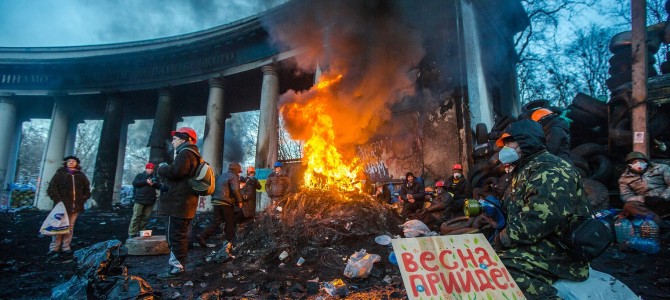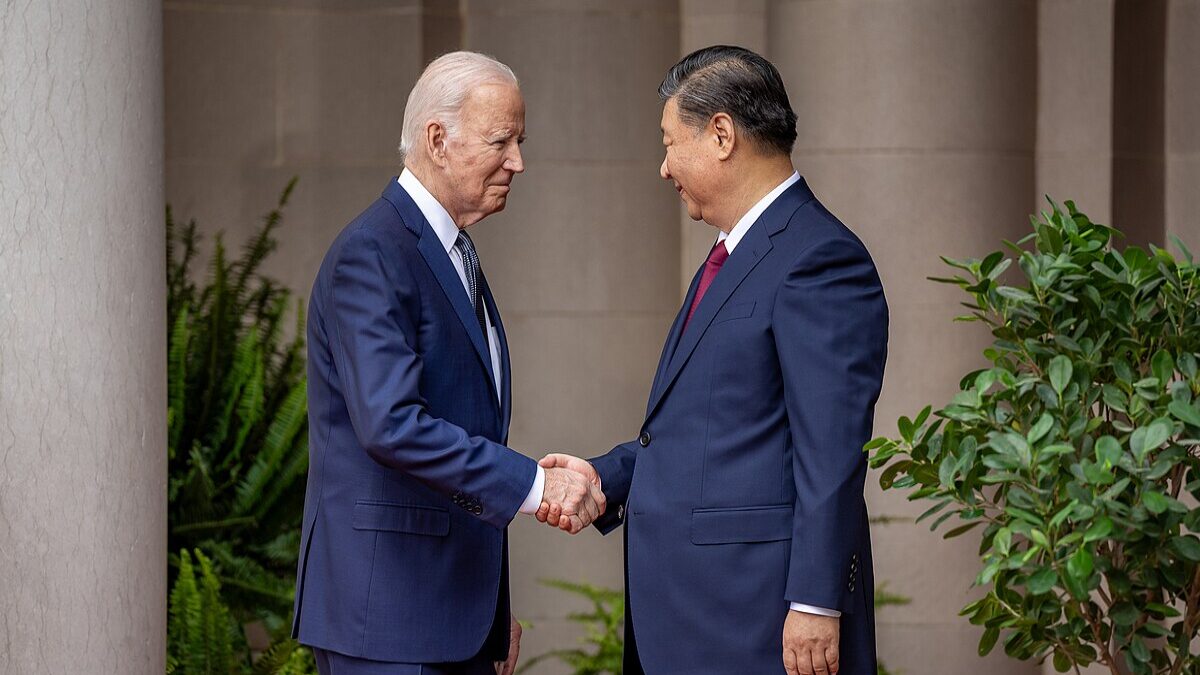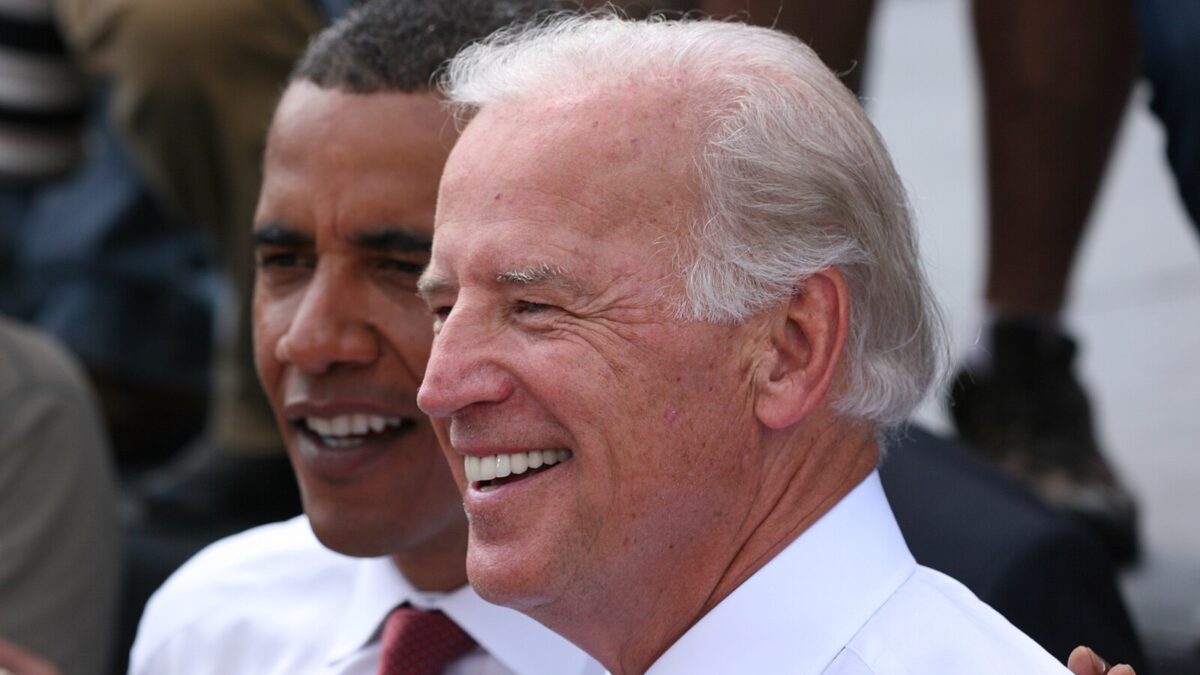
Over the last week, Ukraine became a whole different country – politically and, one might say, mentally. The protests that have been going on in the nation’s capital, Kyiv, as well as over the country, for three months, resulted in the president being ousted from his post. However, this achievement came at a great cost: More than 80 people died during the last few days, and many are still fighting for their lives in hospitals. What caused this uprising and how the protesters managed to change the situation is explained shortly here.
What drove people to the streets?
The protests were triggered in late November of 2013 by the fact that the Ukrainian government refused to sign an agreement with the European Union (EU), which would facilitate trade between Ukraine and the European countries and make economic processes in Ukraine more transparent. This agreement had been anticipated by Ukrainian business and citizens alike as a chance to save struggling economy and as an opening to a possible membership in the European Union in the future. Being abruptly denied this opportunity, people gathered for a rally on Kyiv’s central Independence square or, as it is named in Ukrainian, the Maidan. And the protests that started off since have been dubbed “the Euromaidan.”
How did it all turn so violent?
Protests began as a peaceful demonstration demanding the resignation of the cabinet of ministers who failed to secure the European treaty, with middle class and students being the basic group of participants. The rallies, however, were not successful and looked likely to end without bringing any significant change. But then one night, riot police attacked the people at the square and cruelly beat them. Next morning, with videos of police brutality going viral, more people joined the protesters. After another attack of riot police mere days after that, one could find hundreds of thousands of Ukrainians from all over the country protesting in Kyiv. In other big cities, protests were happening, too, some of them resulting in the occupying of regional administrations.
What was the response of the government?
The pro-presidential political party that held the majority of seats in Ukrainian parliament reacted with passing of a number of laws criminalizing protest activity in mid-January 2014. Rigging the votes to get the laws adopted, the ruling party MPs made it illegal to go on a rally, to set up a protest tent, to occupy governmental buildings, and to publish articles discussing unlawful actions of public officials. From unprecedented limits on international NGOs to absurd prohibitions on wearing a helmet and having more than 5 cars in a row on streets (‘Yay, no more traffic jams!’, Ukrainians commented with sarcasm), the new rules, named “dictatorship laws,” were aimed to curb the protests.
Did it work?
Actually, people reacted with even bigger demonstrations, escalating in clashes with riot police. Police killed two protesters with guns. One of the protesters died of wounds, and another was found frozen to death in a forest after being kidnapped and tortured. Several protest leaders fled abroad. One of them, a leader of the protest-on-wheels group known as the Automaidan, was transported to get treatment in Europe after being abducted and tortured into saying he was a US spy. Many activists were arrested with possible prison terms ranging from 8 to 15 years. This pushed government and the opposition to negotiations. After the loss of lives and police atrocities, new faces in the same system was not enough. Protesters demanded resignation of the president and a change of Ukrainian constitution, which would take away central powers from the president.
Did the government meet the demands?
On the 18th of February, a parliamentary session was scheduled that was supposed to introduce the negotiated changes to the constitution. However, the pro-presidential party refused to address this issue during the session. After that, the protesters stormed police cordons and some of them were killed. Protesters were pushed back to the central square, where the clashes continued. During the next two days, as clashes ended and the protesters were trying to restore the barricades, more than 70 people were killed by snipers, the riot police and hired thugs that cooperated with the police. The victims did not hold firearms and some were without protective vests. And several wounded protesters are reported to have died in a fire that consumed a building near the Independence square.
The tragic losses and murder orders prompted some pro-presidential MPs to join the opposition in voting for cease-fire decree in the parliament. A new majority with more ruling party MPs adding to its numbers voted for the changes to the constitution that made the president less powerful. A treaty was signed between the president and the oppositional leadership that sought to ban riot police from using guns and to set up early elections at the end of this year. Protesters, however, did not agree with the president being in office for another 9 months. A leader of one of self-defense paramilitary groups made an ultimatum for the president: if he does not resign, protesters will storm his private residence. Over the next couple of hours, the president left Kyiv, and the parliament set the date of next presidential elections on the 25th of May 2014.
What is happening now?
Current whereabouts of the former president are unknown. Meanwhile, the parliament passed the laws allowing release of political prisoners, one of whom is the former prime minister. Local conflicts continue in several cities. In Sevastopol, a city in Crimea that has a special status due to hosting a Russian navy base, there has been a rally that refused to recognize the local city government and elected a Russian citizen as an alternative head of city administration. A video of Russian armored vehicles in Crimea has appeared. The Russian Federation has not yet recognized current Ukrainian government.
What has been the role of international community in Ukrainian events?
Different countries and international organizations, such as the United Nations and the European parliament, called for peace and justice in Ukraine. Diplomatic representatives of the USA and the EU were present in Ukraine during the protests warning against the use of force against the protesters. Poland and Lithuania let in wounded Ukrainian protesters to receive medical treatment. Russia’s role has influenced the protests, too. First, a $15 billion loan suggested by Russia was the alternative that the Ukrainian government chose instead of the agreement with the EU. Second, more billions were promised to Ukraine before the biggest crackdown of the protests that involved mass killings. However, Russia revoked this offer after the resignation of the president, citing the absence of a new government as a reason.
Who are the people that went out on the protests?
People from different geographical regions of Ukraine and social groups took part in the protests. Sociological survey held at the beginning of February showed that 88 percent of those who continuously took part in the Euromaidan, were men, and women comprised 12 percent. More than half of all of them belonged to the 30-54 years age group, and 44 percent represented middle class – professionals and private entrepreneurs.
Iryna Fedets is Senior Policy Analyst for Economic Freedom in Europe and Central Asia at The Heritage Foundation.








